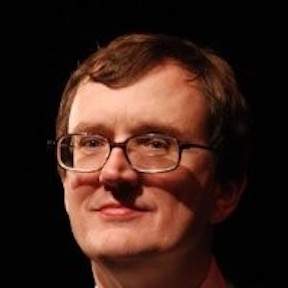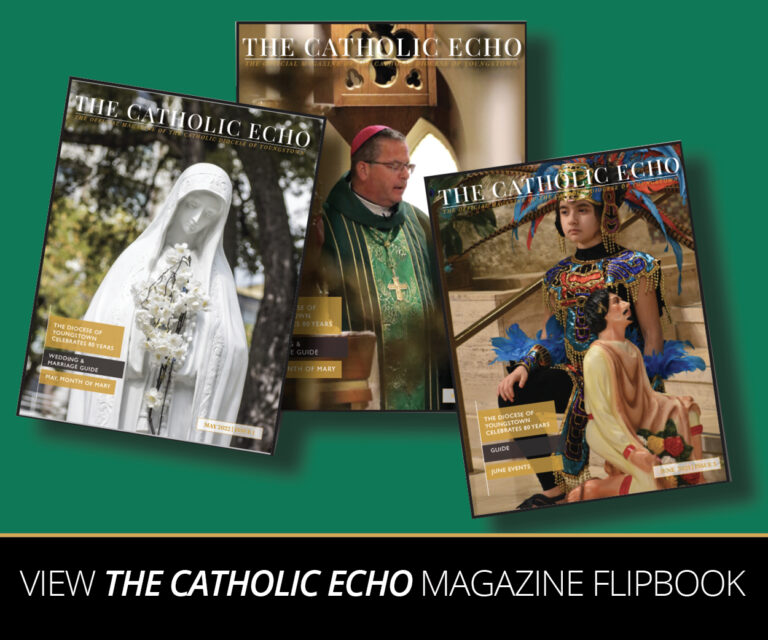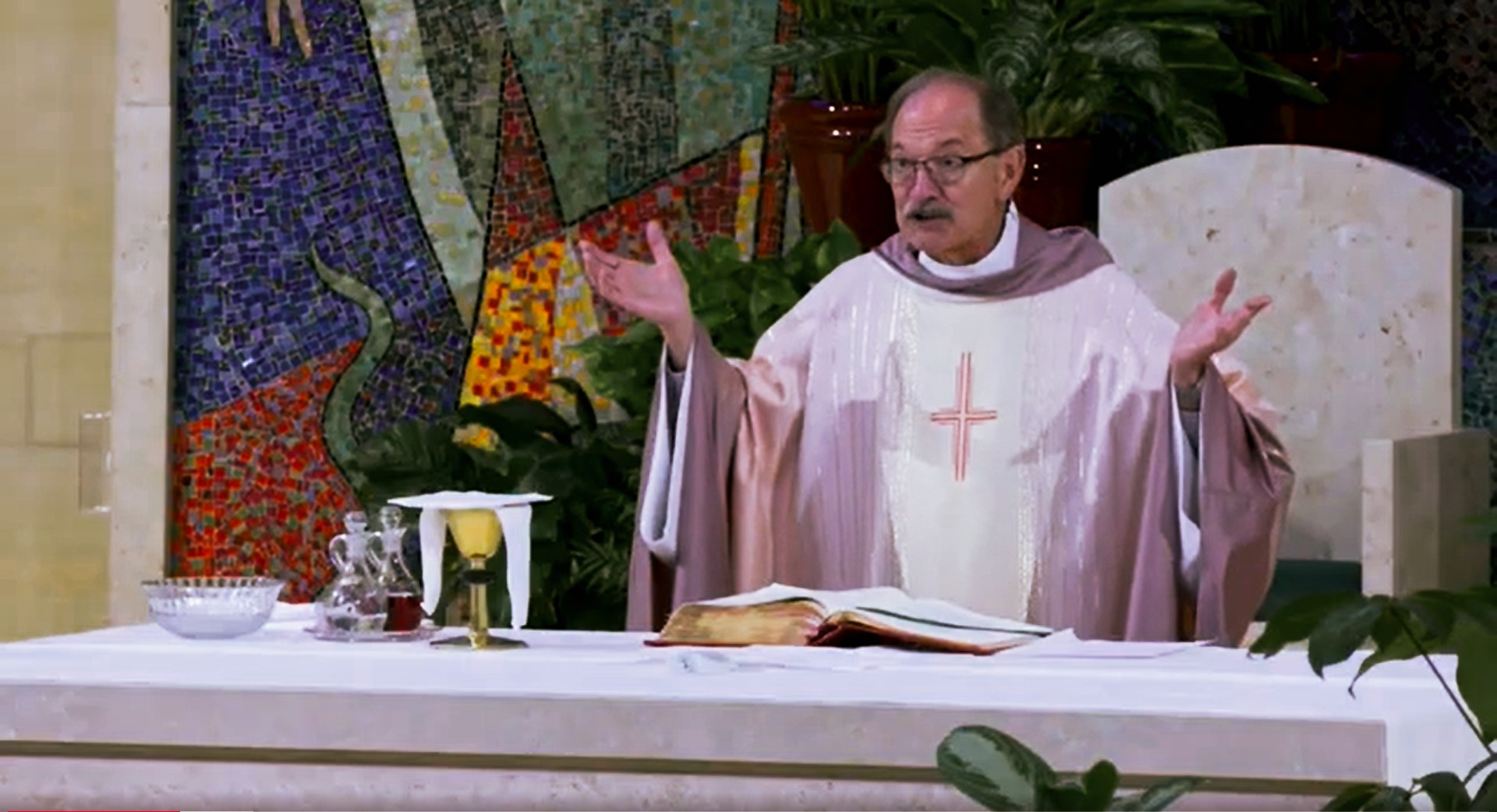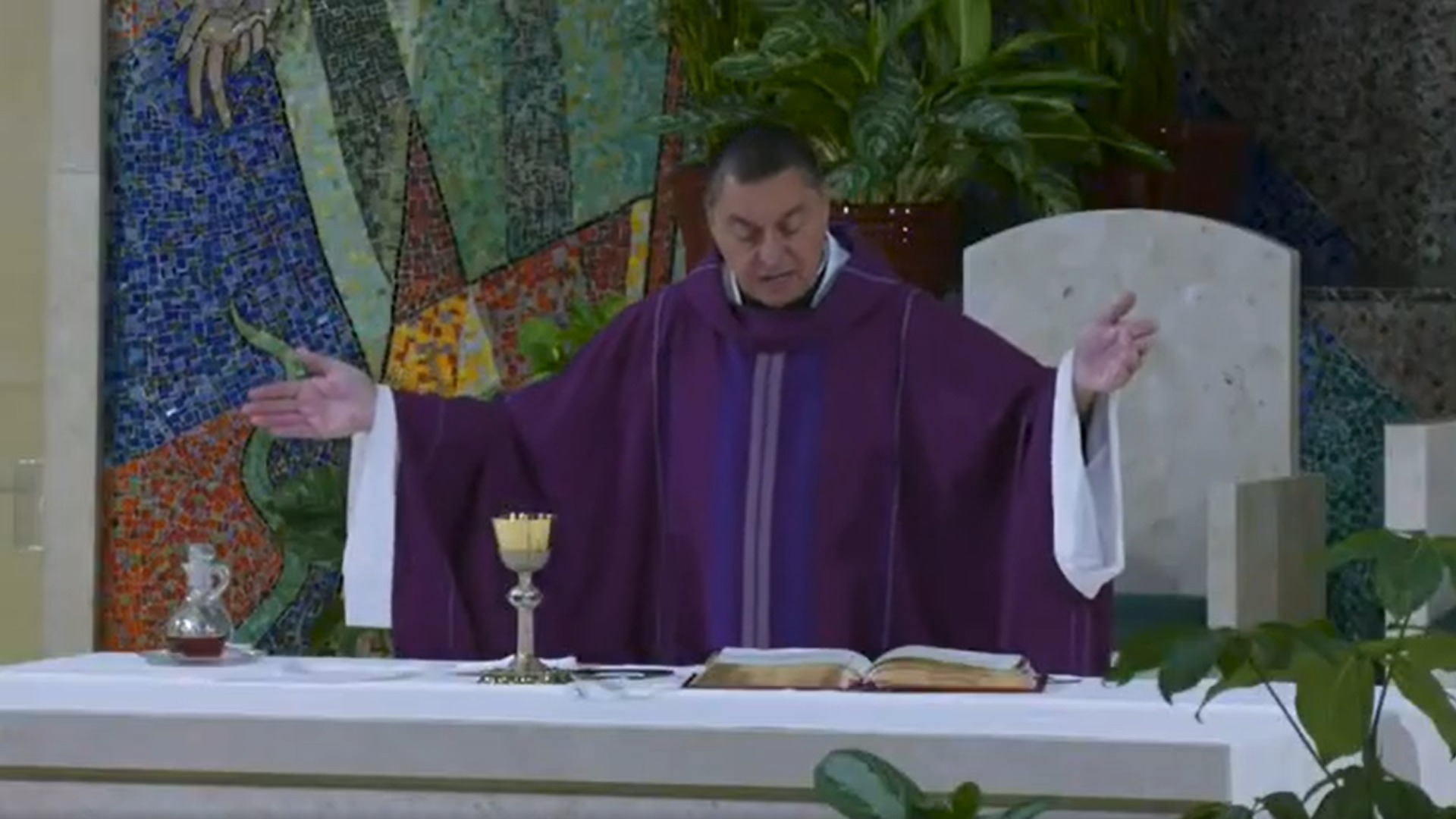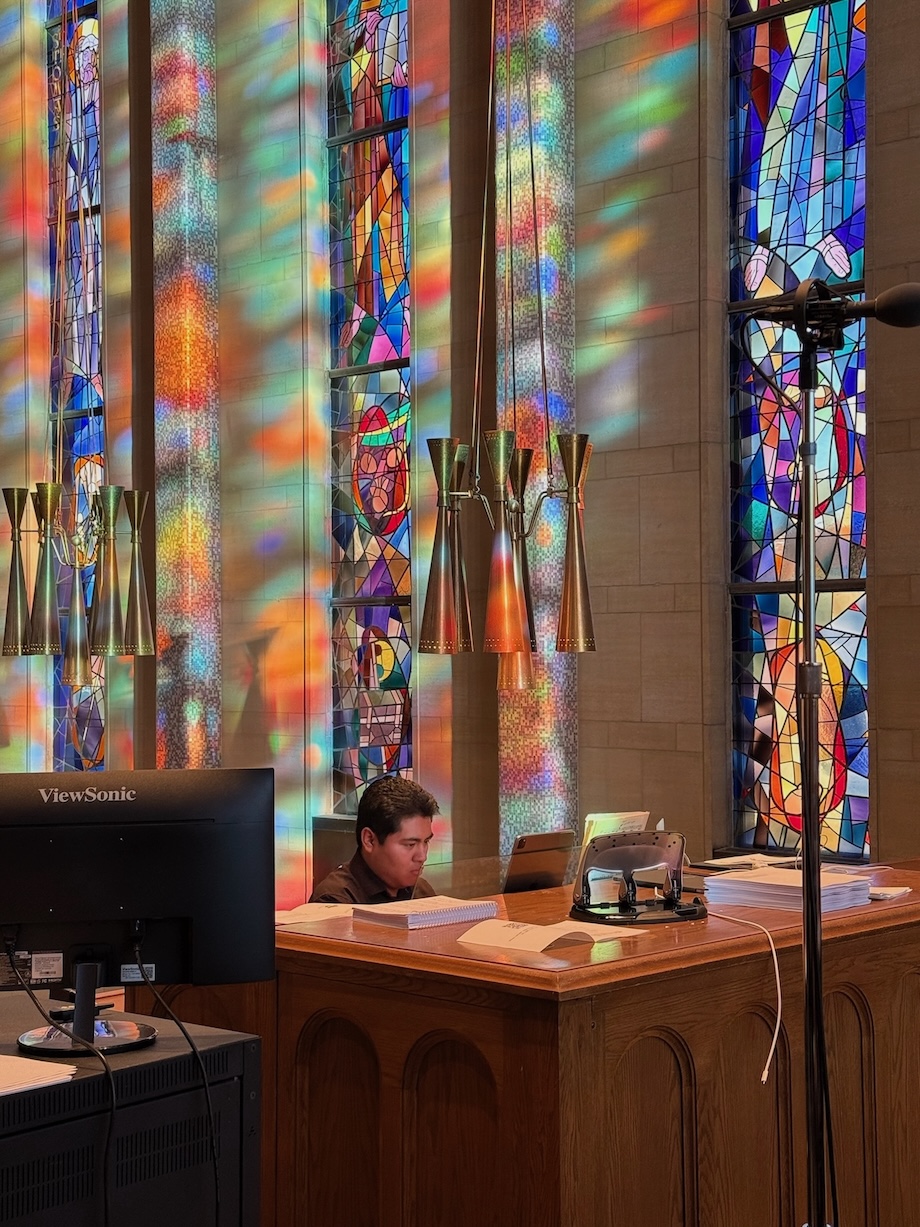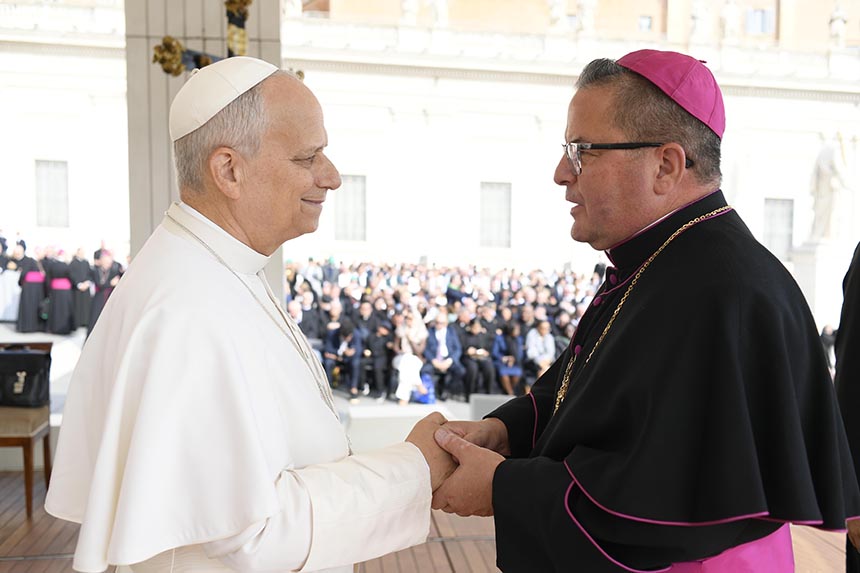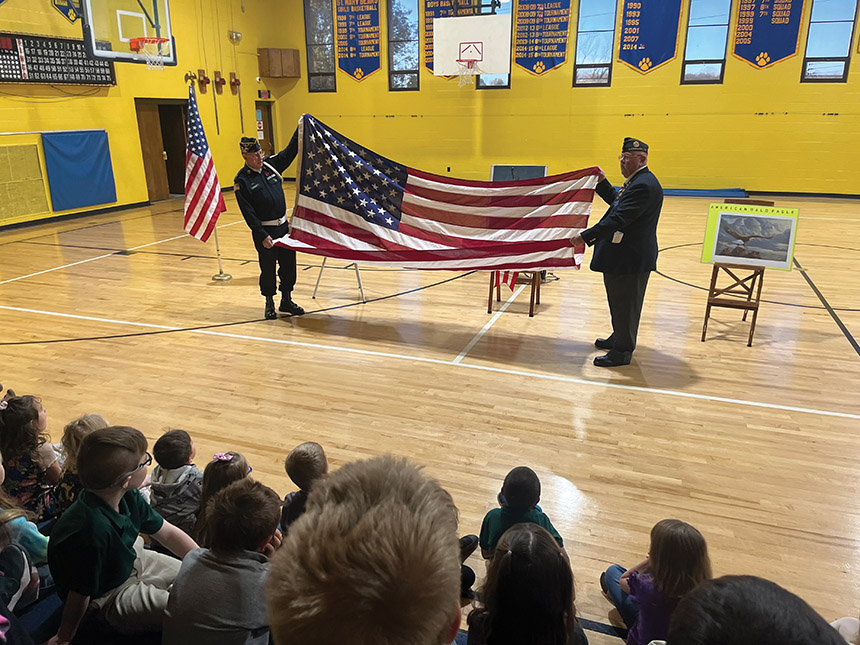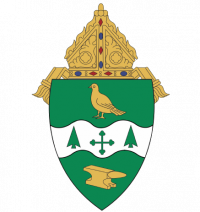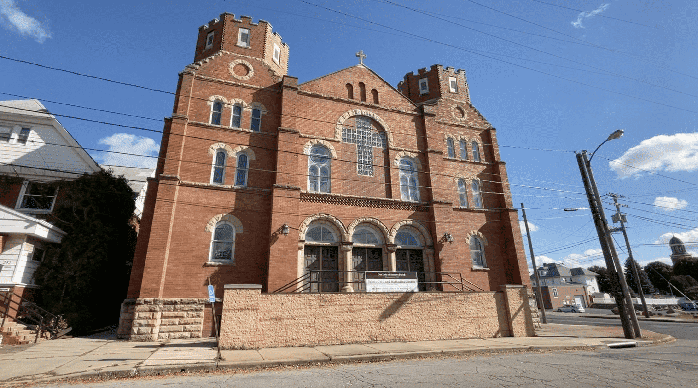
The Youngstown Diocese is embarking on a new archives center and storage facility on the grounds of the former SS. Cyril and Methodius Church on East Wood Street in Youngstown, Bishop David Bonnar announced at a November 20 press conference.
Bishop Bonnar discussed plans for a state-of-the-art, temperature-controlled facility for storing diocesan archival records and documents. The building will also allow for an archives center with exhibit space and public programing space.
The new facility will be named the All Saints Archival Center.
“I am just thrilled to share that we, as a diocese, will soon be breaking ground on something new to share the faith and legacy of the six counties of our diocese,” Bishop Bonnar said, citing the contrast of such positive news with the economic difficulties, population decline, parish and business closings that Northeast Ohio has suffered in recent decades.
Also present for the press conference were Monsignor John Zuraw, diocesan vicar general, Joan Lawson, diocesan chancellor and chief archivist, and Hannah Shaw, assistant archivist.
Citing the recommendations of the archives’ staff and the diocesan consultors and finance council, Bishop Bonnar spoke about the choice to use SS. Cyril and Methodius Church: “The church building itself is unique and a historic structure,” Bishop Bonnar emphasized, and the grounds allow ample space to build a two-story facility to house archival offices and a temperature-controlled vault for documents. The bishop also unveiled architectural drawings of the planned site and facility.
Lawson, who addressed the press conference and also spoke to The Catholic Echo in an interview, noted that the storage facility will have a public reading room for visitors and researchers, and that the Archives Center in the former church building will include exhibit space for diocesan history and space for public programs.
Bishop Bonnar said, “If you walk or drive down Wick Avenue you will see an array of museums integral to Youngstown.” Having lived here since being ordained and installed as Bishop in January 2021, he said that he has seen “The people here care about their past, even as we all live in the moment and prepare for a new future.
“The Diocese of Youngstown is part of this rich history. The clergy, religious and faithful of this diocese—which spans over 80 years—has done their best to live the Gospel,” Bishop Bonnar continued. “We stand on the faith, hope and love of so many of our brothers and sisters. Their memory must be kept alive in the present generation and for years to come.”
On becoming bishop, Bishop Bonnar said, “I made it a priority to protect and organize the records and the patrimony”—establishing the Archives Office of the diocese in 2022, hiring Lawson as chief archivist and later Shaw as assistant archivist, initiating a search for a space to allow the diocese “to best preserve the materials of the past and keep the memory of our faith community alive.”
“I was driven by the belief,” Bishop Bonnar continued, “that if we stop telling our story, we run the risk of becoming irrelevant.” He also cited Canon Law mandates that a diocesan Bishop is “to take care that there is an historical archive in the diocese and that documents having historical value are diligently protected and systematically ordered in it.”
“In the mind of the Church, archives are places of memory of the Christian community and storehouses of culture that enrich our communities,” Bishop Bonnar said.
As he addressed the press conference, Monsignor Zuraw, invoking the expression, “You Are The Church,” said the development of an archival center allows us to reflect not only on our rich history, but to remind us that we are at the heart and center of the Church.”
Noting the Youngstown Diocese’s 82 years of history since its establishment in 1943, Monsignor Zuraw told those assembled that the project will protect and honor “the patrimony of our local Church.”
In that spirit, Monsignor Zuraw explained, “Our center will be dedicated under the title ‘All Saints Archival Center,’” acknowledging not only canonized saints but all saints “living now and those blessed in heaven.”
Monsignor Zuraw also said that the estimate for the project is $2.7 million. To pay for costs, the diocese will tap into diocesan financial reserves and seek grants and foundations dedicated to historical preservation and private donations.
In speaking at the press conference, Lawson told those gathered that “I’m very excited about this moment, where we’re building a meaningful future by knowing our past.”
This latest project, Lawson told the Catholic Echo, reflects Canon Law, the policies of the U.S. bishops and the mind of Pope Franics, who wrote in Amoris Laetitia (“The Joy of Love”), his 2016 post-synodal apostolic exhortation: “Knowing and judging past events is the only way to build a meaningful future. Memory is necessary for growth.”
This project is only the latest development in the diocese’s efforts to maintain archives, which date back to the early 1970s, Lawson said, at a time when U.S. bishops were encouraging dioceses to develop archives.
Bishop James Malone and Father (later Monsignor) Jame Clarke, then-diocesan chancellor, began a concerted effort to collect documents, including records of Bishop James McFadden, the diocese’s founding bishop, Bishop Emmet Walsh and Bishop Malone—including Bishop Malone’s notes from the Second Vatican Council—Diocesan Pastoral Council records, records from parishes, social service agencies, cemeteries, shrines, men’s and women’s groups and schools.
“Then in 1975, our diocese came up with a creative way of having our records and documents preserved in an environmentally-safe manner by professional archivists,” entering into an agreement with Kent State University, “which at the time was an American history research center.”
Under the agreement, the Kent State libraries received records from parishes and the diocese from 1943—when the Vatican established the Diocese of Youngstown—until 1978, Lawson said. Those records entrusted to Kent State libraries remain there.
Since 1978, diocesan archive records have been stored in basements of the diocesan administration buildings, Lawson said. That practice, while ensuring that the records and documents were kept together, was less than ideal for preserving them because of a lack of adequate environmental controls. From 2013 to 2015, Lou Jacquet, retired editor of the Catholic Exponent, was employed by the diocese to inventory the diocesan archives.
The new archives facility, Lawson said, will provide the necessary safeguards for proper preservation, protection and systematic ordering of records required by Church law.
Construction is expected to begin in the spring of 2025, with plans for completion in the fall, Lawson explained. Among the advantages of using the former church building is its ample space and the fact that it is generally in a good state of repair, she said. “The building required very little repair and asbestos mitigation is largely completed. A new HVAC system will be coming,”
In addition, the building is close to the “bishop’s seat”—St. Columba Cathedral—and within the educational, research, museum and library district of Youngstown’s Downtown. “So, it would be convenient for researchers going to the Tyler History Center on West Federal Street or the Main Branch of the Public Library of Youngstown on Wick Avenue.” The site is also accessible by bus and car and has adequate parking, Lawson added.
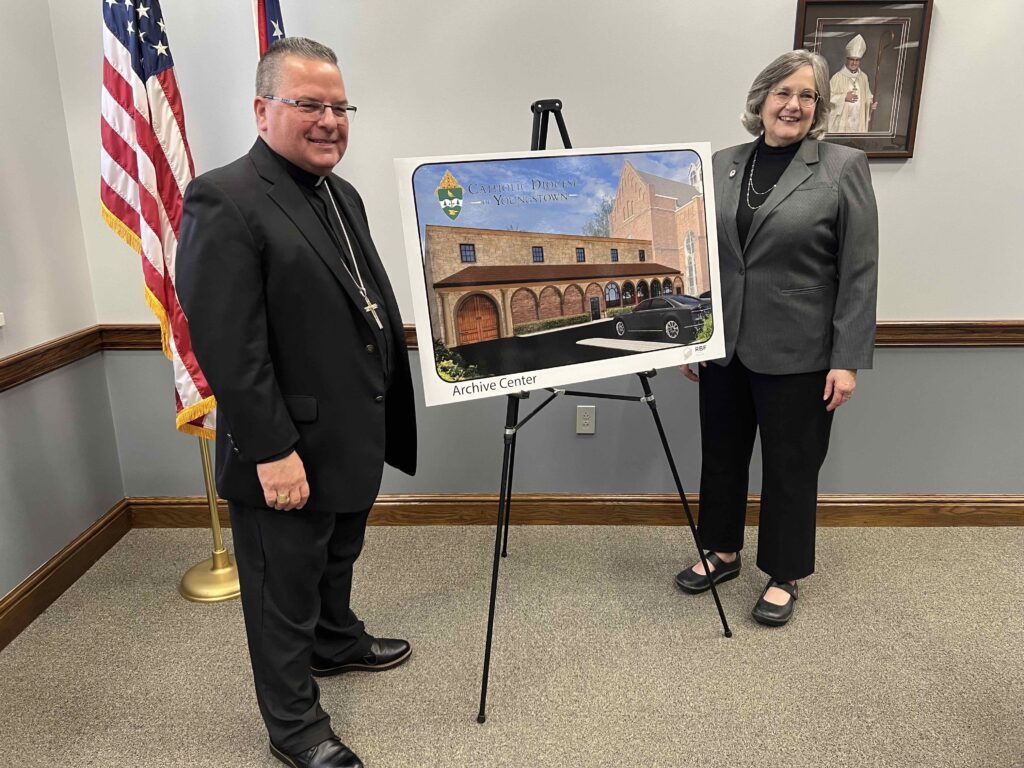
The building is well-suited as a visitor’s center, Lawson noted, “where visitors can experience the church interior with its soaring, colorful dome and its walls of beautiful stained glass. The exhibits will tell the story of the people and churches of the Youngstown Diocese.
“The church itself is the biggest artifact in the exhibit,” Lawson continued, “a magnificent example of the Romanesque style that exemplifies the sacrifices and pride of the immigrants who built it—demonstrating the importance that immigrants placed on their faith and the sacrifices they were willing to make to build themselves a splendid house of worship.”
SS. Cyril and Methodius Parish was founded in 1896 as one of the first ethnic parishes serving Slovak immigrants and their descendants. The church was completed in 2000. SS. Cyril and Methodius Parish was merged along with two other Youngstown Slovak parishes—Holy Name of Jesus and St. Mathais—to form Our Lady of Sorrows Parish in 2012. For a time, the cafeteria in the former SS. Cyril and Methodius School served as a St. Vincent de Paul Society dining hall, which has since been relocated—read the full Catholic Echo story.
The desire to maintain the memory of the Church runs deep in Catholic tradition and even reaches back into in Scripture and Hebrew tradition, Lawson said, citing Deuteronomy 4: “Be on your guard and be very careful not to forget the things your own eyes have seen, nor let them slip from your heart as long as you live, but make them known to your children and to your children’s children.”
